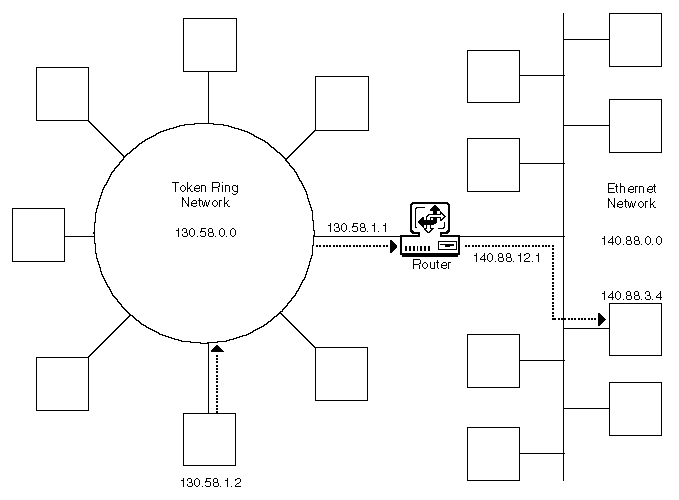How the router connects the source to the destination network

The term routing refers to the transmission of a datagram from one node to another on the same or a different network. The route refers to the path that is chosen to transmit an IP datagram from its origin to its destination, based on the IP addresses contained in the datagram.
When a datagram is sent to a node on another network, the network portions of the source and the destination IP addresses are different. When the packet is received by a router that connects the source to the destination network, the router forwards the packet on the correct interface to reach the destination, as shown in Figure 14. Two networks are connected if at least one router is attached to both networks.
Figure 14
How the router connects the source to the destination network
Each host has a default router or a list of routers in other networks. When IP sends a datagram the following happens: